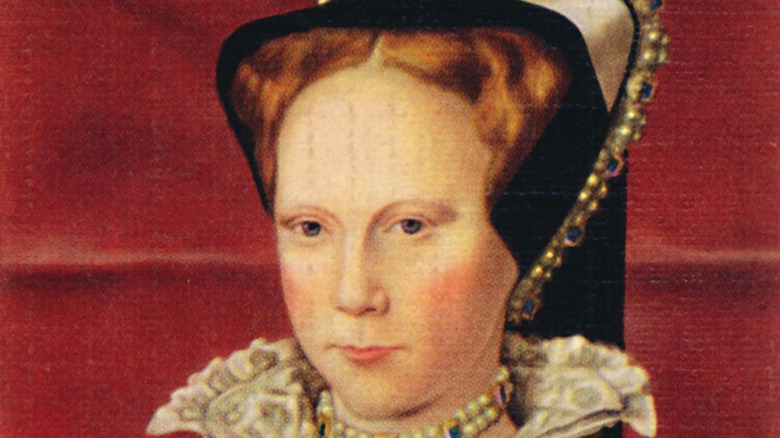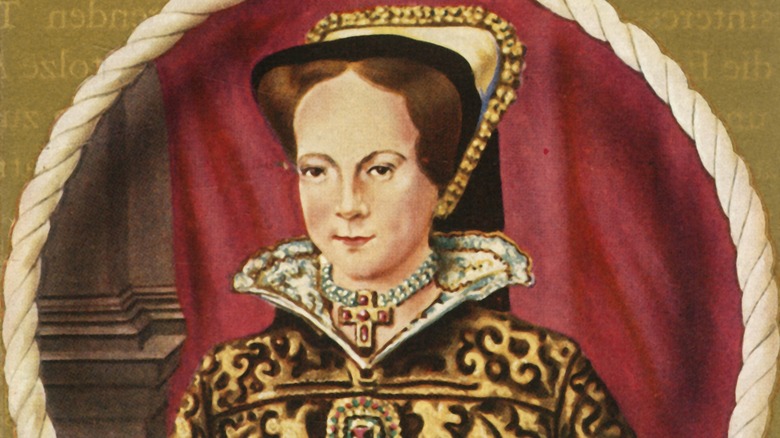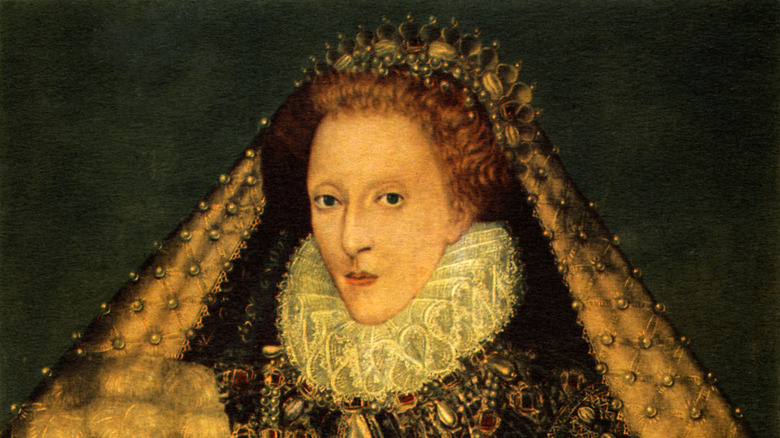What You Didn't Know About Henry VIII's Children
With movie adaptations, TV series, and numerous books detailing his 36-year reign, Henry VIII is still one of the most famous, or infamous royals to this day. History explains that one of the biggest changes that Henry enforced was the splitting of the Church. He wanted to separate from his first wife, Catherine of Aragon, to remarry Anne Boleyn. This was forbidden in the Catholic church. He formed the Church of England so he wouldn't be restricted by the Pope.
This was only one of Henry VIII's family woes and started his mission to birth a son. Historic Royal Palaces outlines that in many ways his three heirs were pioneering royals in their own right. So here's the truth about Henry VIII's children. Horrible Histories have created a song to help people remember the ways that he escaped his six marriages (via YouTube) and the Royal Museums Greenwich outlined that his legacy was shrouded in just as much drama.
History explains that two of his marriages ended in annulment, two were beheaded for adultery and treason, and two died of natural causes.
He had four legitimate children
Tudor Times explains that Henry VIII had four legitimate children (children by his wives). Henry, Duke of Cornwall, was his first son, born by Catherine of Aragon. He also had Queen Mary I with his first wife. He had Queen Elizabeth I with Anne Boleyn and his last son, King Edward VI, with Jane Seymour. Henry VIII was famously enthralled with having a son to be his heir. However, Henry, Duke of Cornwall, didn't survive infancy.
Historic Royal Palaces explains that all three of his other children went on to sit on the throne. Despite being the youngest, Edward took to the throne in 1547, at the age of nine. However, it's reported that he died of tuberculosis in 1553. Mary then took over the throne, but again only ruled for a short period, until 1558. Elizabeth reigned from 1558-1603. Twinkl explains that as Elizabeth never married, she was known as the Virgin Queen and her death marks the end of the Tudor era.
King Edward VI fit a lot into his short life
According to Twinkl, as Edward represented the son and heir that Henry VIII had been waiting so long for, he lived a protected childhood. It's reported that his family surrounded him and loved him and he was provided with a high education for the time.
The Royal website explains that as he was so young when he took the throne, his uncle Edward Seymour acted as a chief advisor and protector. However, that's not to say that they were very close. It's reported that after a military failing Seymour was executed in 1552.
Traditionally, monarchs come to the throne with married partners. However, at nine that wasn't the case for Edward. He left behind no children when he died and Twinkl writes that when he was on his deathbed he announced that he wanted his cousin, Lady Jane Grey, to be his successor. He wanted to stop his sister Mary from sitting on the throne as they disagreed when it came to religion. Lady Jane Grey sat on the throne for only nine days before Mary became Queen. She was executed in 1554.
Mary became England's first female monarch
She may have only ruled for five years, but History explains that Mary I was England's first female monarch. She didn't align with her father or brother's protestant beliefs and was a staunch catholic. She's potentially most remembered in history books for burning around 300 protestants at the stake for heresy. It earned her the nickname Bloody Mary.
Historic Royal Palaces writes that she married the Spanish King Philip II in 1554 which wasn't a popular move with a lot of people in England. Throughout her reign, she was plagued with what are thought now to be phantom pregnancies. While it's reported that she had symptoms that would suggest she was expecting a baby, she never had an heir. Royal Museums Greenwich says that from reading accounts from the period, it'd seem that Mary wasn't a popular queen due to her catholic views and intolerance of other religions.
In 1558 she died after suffering from illness. As she never had a child, the throne was passed onto Elizabeth.
Elizabeth and Mary had a fractious relationship
Just because they were sisters doesn't mean that Mary and Elizabeth were close. Quite the opposite. Royal Museums Greenwich explains that, like her brother and father, Elizabeth aligned herself with the protestant church, which made her an enemy of Mary during her time on the throne. Historic Royal Palaces reported that Mary even imprisoned Elizabeth in the Tower of London during her time in power due to suspicion of treason.
Mary I wasn't the only Mary that Elizabeth had issues with. History explains that during her time on the throne, Elizabeth also had a very difficult relationship with her cousin, Mary, Queen of Scots, despite the fact that the pair never actually met. The publication outlines that their tensions stemmed from who they believed had the right to sit on the throne.
As reported by History, historian Antonia Fraser wrote in Mary Queen of Scots, "Little is known of Elizabeth's inner feelings for Mary, since the English Queen had learned in childhood to hide all inner feelings, those dangerous traitors, within the breast." However, History explains that after it was revealed that Mary was involved in a plot to assassinate Elizabeth to take the throne, Elizabeth signed off on Mary's beheading.
Henry VIII acknowledged one of his illegitimate children but it's reported that there are more
HistoryExtra explained that, while only three of Henry VIII's heirs survived infancy and went on to become King or Queen, it's believed he had many more children. These included two children with Mary Boleyn, sister of his second wife Anne. However, the publication outlines that he only acknowledged one of his illegitimate children, Henry Fitzroy.
Henry Fitzroy was born in 1519 while Henry VIII was still married to Catherine of Aragon. His mother was Elizabeth Blount. According to British History Tours, Fitzroy means son of the king and while he would never be the heir to the throne, Henry Fitzroy was very loved. Before he was six, Henry VIII made him a knight. He went on to become 1st Duke of Richmond and Somerset.
It's reported that Henry Fitzroy died at the age of 17 years old in 1536. A year later, Henry VIII got his first male heir when Edward was born.





